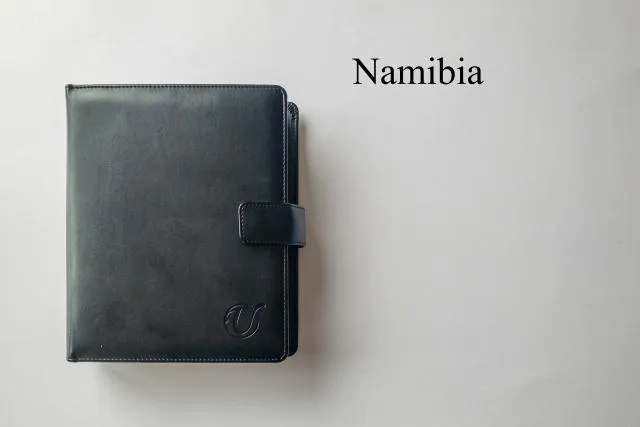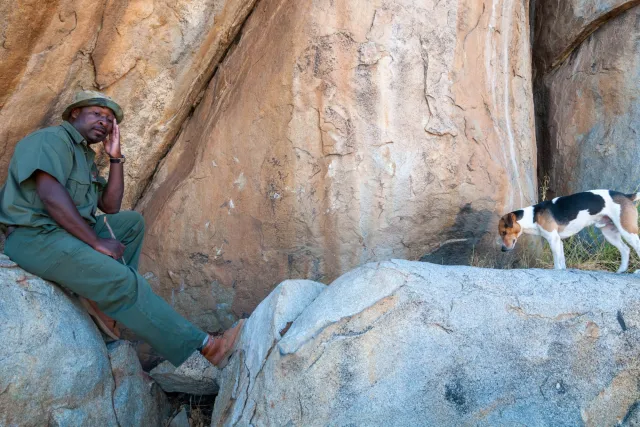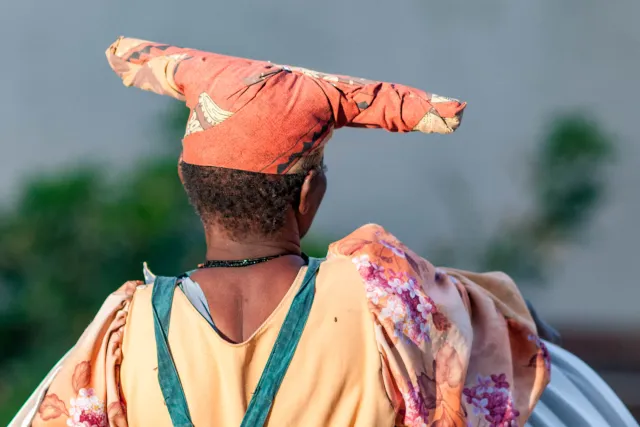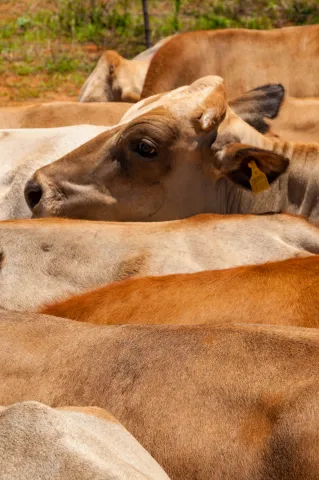When the first tour description reached us and I read the term guest farm, I first thought of a vacation on the farm and was not exactly thrilled. But the consultant from Umfulana was quickly able to convince me that the farms are an important part of Namibia and that it is absolutely worth living there.
We planned overnight stays on three guest farms and first visited the Immenhof near Omaruru. The farm has been owned by the Seydlitz family since 1913 and has been operated as a guest farm for several years.
The Immenhof is about 20 km from the main road and we passed six gates on arrival that we had to open and close. The time on the farm was very relaxing. On the day of arrival we went on a so-called sundowner tour. The jeep took two and a half hours over the 5000 HA area. For example, we saw many springboks on the way. The goal was a rock plateau. Our hosts provided chips, beer, champagne and water and we enjoyes a fantastic view. After sunset we went back to the house. Meals were eaten at a large table with the entire family and all guests. The first evening there was spaetzle. The Namibian cook liked to watch cooking programs on German television and was so impressed by the spaetzle that were shown over and over again that they ended up on the farm's menu at some point. The spaetzle scraping is quite difficult, but a Swabian guest had given her a spaetzle press. And so we got great spaetzle for dinner.
On the second day there was another farm tour for us alone. The destination was really interesting rock carvings of the San who lived as hunters and gatherers in this region. We were also impressed by the clinking rocks. If you knocked on different parts of the rock, different tones were heard. Musically gifted people can play real melodies on the rocks. We were on the farm for three hours that day. Of course we also saw animals, for example springboks and saber antelopes.
It was an all-round positive experience, especially the very personal contact with the family.
The second guest farm was Hamakari Farm near Waterberg.
We took our time on the way there and didn't get there until 6:30 p.m. They were very pleased that we had finally arrived because they were already worried. Sabine and Wilhelm are the fourth generation to run the farm. It is an ecologically run cattle ranch. We were the only and last guests before the family went on vacation. So the contact was very personal here too. Two of the four children were studying in Germany at the time and a son flew to Germany the next day to visit them. He had tons of questions for us and was really worried about not being able to cope with the cold.
A lot of time was spent with the family here too. On the second day Wilhelm took us for a trip across the farm. The herd of cattle had to be checked. He mainly sold the beef to Sweden. We got a really good introduction to running such a farm.
But we also learned a lot about the history of Namibia here. The Herero battle took place partly on the premises of the farm. We also visited a military cemetery nearby.
At sunset we drove to a reservoir to end the day. Flamingos as the sun sets. Simply terrific.
We spent our last days in Namibia on the third guest farm. It was the Ondekaremba guest farm, near Windhoek.
The farm has been family-owned for 100 years and is more like a hotel. But here too there was close contact with the family. When the host heard that we had never seen gophers, a barbecue evening was planned in the savannah. On the way to a spectacular sunset we visited a ground squirrel colony. Just absolutely cute animals.
The last sunset in Namibia was by far the most beautiful of the whole trip and a wonderful end to this trip.
Even today, with a bit of a gap, I can only recommend everyone who has traveled to Namibia to plan a few nights on a farm. The rooms were all very comfortable and you can hardly get a more personal contact in this country.
















Comments